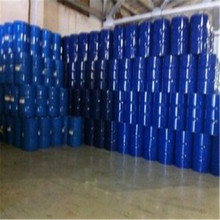您现在的位置是:半岛新闻网 > 关于我们
NASA's Curiosity rover takes Mars selfie during huge dust storm
半岛新闻网2024-09-22 05:36:14【关于我们】6人已围观
简介The dust storm on Mars continues to grow.On Wednesday, NASA announced the storm has progressed from
The dust storm on Mars continues to grow.
On Wednesday, NASA announced the storm has progressed from a continent-sized tempest to an event that has engulfed the entire red planet.
"The Martian dust storm has grown in size and is now officially a 'planet-encircling' (or 'global') dust event," NASA said in a statement.
SEE ALSO:NASA's Opportunity rover braves huge dust storm on Mars as scientists keep watchBut a storm can't keep the Curiosity rover down.
The space robot, which has been exploring the Martian surface since 2012, took a pretty amazing selfie as the storm was heating up on June 15.
That said, NASA's other functioning rover on Mars isn't doing quite as well in the storm.
For two weeks, the storm has smothered the Mars Opportunity rover, turning day to night and blocking nearly all light from reaching the robot's solar arrays.
 A shade simulation of dust blocking out the Martian sun. Opportunity has been experiencing the far right conditions.Credit: nasa
A shade simulation of dust blocking out the Martian sun. Opportunity has been experiencing the far right conditions.Credit: nasaThe energy-starved machine has been in sleep-mode for the past week, and is no longer communicating with NASA engineers -- though, they're hopeful the robot will charge up when the storm dissipates.
That said, even if Curiosity experiences near total darkness, it won't lose power like Opportunity. Curiosity, a car-sized rover, runs on nuclear energy.
It's unknown how long this dust storm will last, though previous Martian dust storms have persisted for weeks to months. It's also unknown why some Martian storms stay relatively small and die off after a week, while others continue to grow.
"We don't have any good idea," Scott Guzewich, an atmospheric scientist at NASA Goddard Space Flight Center, said of these storms in a statement.
But Curiosity, along with spacecraft orbiting Mars, are now in an ideal position to send information about this progressing dust storm back to Guzewich and other NASA scientists.
Mars, though, is an ideal place for dust storms to occur. Unlike Earth, it has no trees and vegetation to keep dirt rooted to the Earth. And Mars' oceans have long since evaporated away, leaving a vast dust-ridden desert at the mercy of the callous Martian winds.
Featured Video For You
NASA is attempting to fly a helicopter on Mars for the first time
很赞哦!(2889)
相关文章
- 古物:回望时间的印记
- Waseem ‘daring greatly’ after defeat
- 守护绿色就是守护岭南文化的历史!广绣传承人谭展鹏为绿美广东代言
- Twitch streamer gives a young gamer the most heartwarming pep talk after losing
- Apple iPod: The First 10 Years of the Ubiquitous Media Player
- Portugal's path to World Cup blocked by North Macedonia
- Medvedev shrugs off Wimbledon ban threat
- 'N. Korea economy has become durable despite sanctions': presidential adviser
- A Global Tour of Bakeries With Fascinating Histories
- 'N. Korea economy has become durable despite sanctions': presidential adviser
热门文章
站长推荐

Spaceship tech slashes energy usage of existing AC systems

Medvedev shrugs off Wimbledon ban threat

Facebook still hasn't fixed its discriminatory ad problem

A man's epic tumble on live TV is the election relief we all needed

Why Kamala Harris triggers Donald Trump so intensely.

Apple macOS High Sierra has a huge security vulnerability

Diamond and Silk get more time in the spotlight thanks to Zuckerberg

Iran bans women from football stadium again